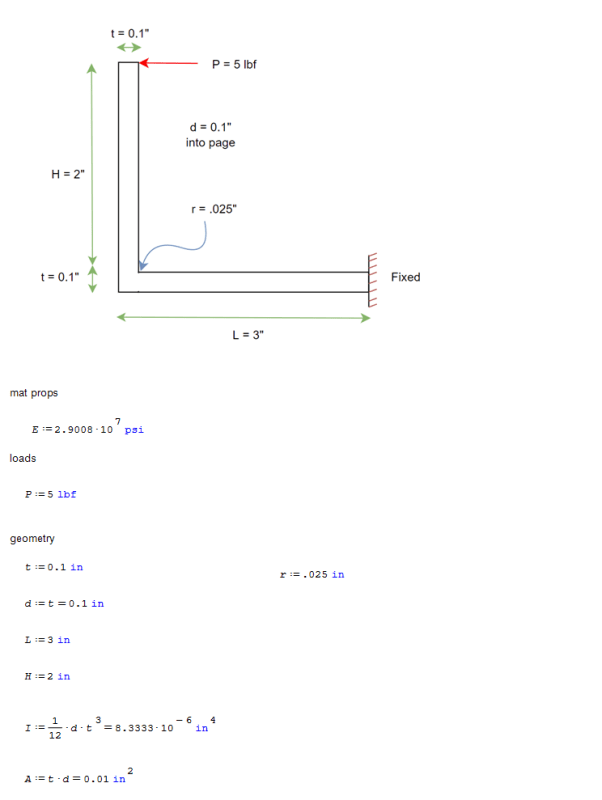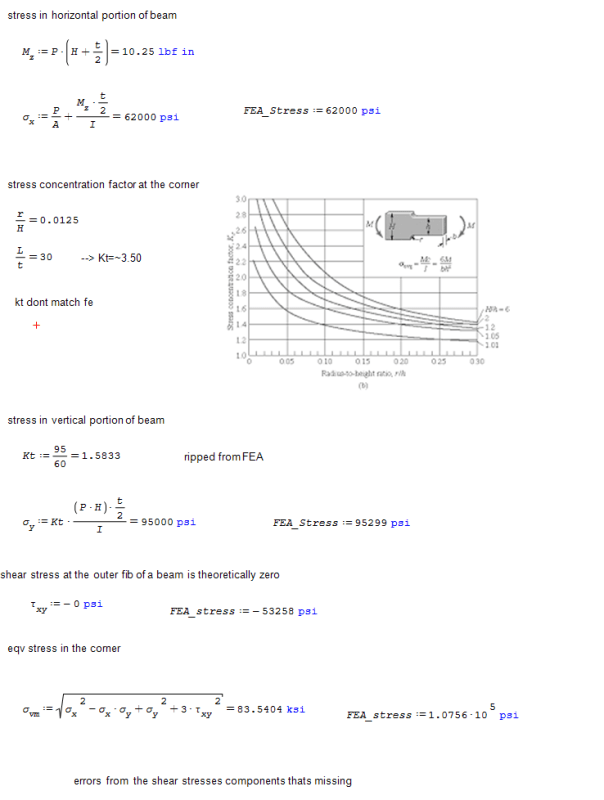SpaceEngineer4
Aerospace
Good morning lads and salutations. i have clarifications to give on a post i made in another forum here in the structures forum. i am designing a single piece bent frame for an aircraft ground support structure (pics are simplification of actual design, assume uniform depth into sheet w rectangular section) and have made discovery that the fe stress does not agree well with the hand calculations. interesting couple notes:
[ul]
[li]the shear stress in the corner is nonzero, despite the traditional beam theory stating that shear on outer fiber must be zero - these change the eqv stress est and yield criterion [/li]
[li]the stress concentration factor is not easily read from the tables [/li]
[/ul]
is it really true that for such a simple structure detailed fe is required to perform the design? you can view that from the calcs, the values match detailed fe for most nominal bending stress, but not the concentration and not the shear stress. any one have insight why, or sugestions to improve the calcs? what are the design recommendations here? i need to design for strength and fatigue so getting local and nom stresses are important.



Sincerest gratitude to all in advance.
~Robert
[ul]
[li]the shear stress in the corner is nonzero, despite the traditional beam theory stating that shear on outer fiber must be zero - these change the eqv stress est and yield criterion [/li]
[li]the stress concentration factor is not easily read from the tables [/li]
[/ul]
is it really true that for such a simple structure detailed fe is required to perform the design? you can view that from the calcs, the values match detailed fe for most nominal bending stress, but not the concentration and not the shear stress. any one have insight why, or sugestions to improve the calcs? what are the design recommendations here? i need to design for strength and fatigue so getting local and nom stresses are important.



Sincerest gratitude to all in advance.
~Robert
